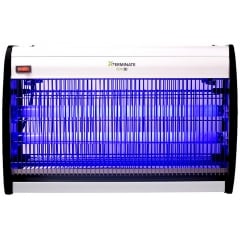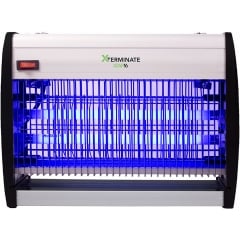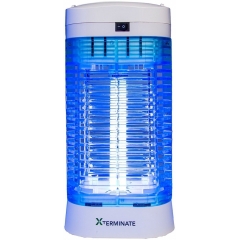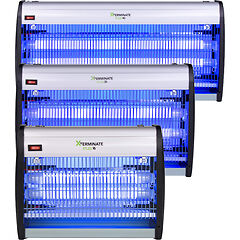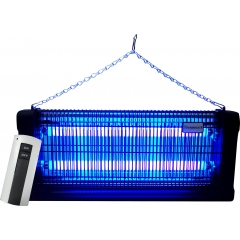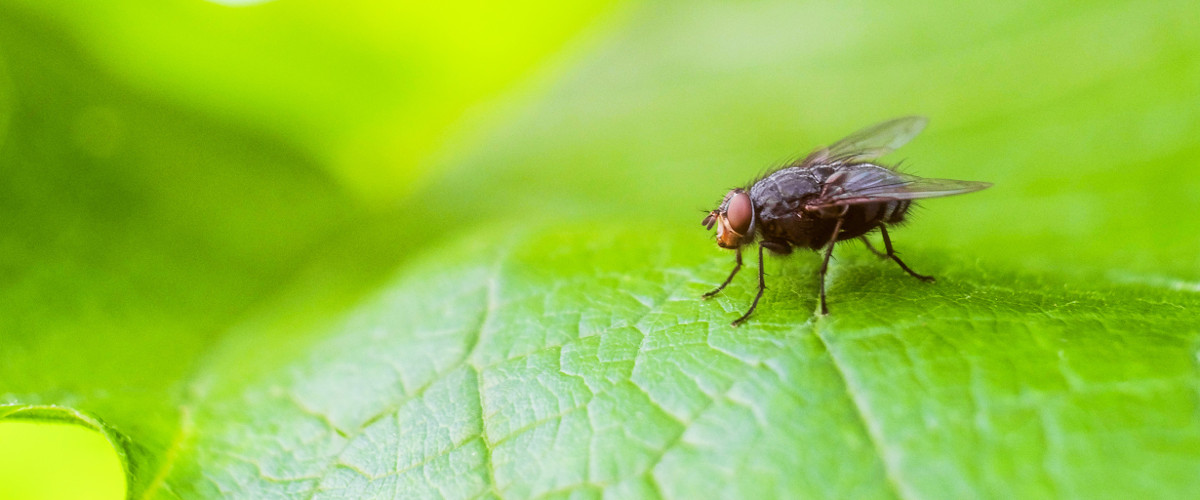
Electric Fly Killers
Browse one of Europe's biggest ranges of electric fly killers and get the best price on pest control today. Our range includes something for every budget, from small desktop fly zappers to cutting-edge LED fly killers that work without needing any bulb replacements.
Categories
- Type
- Location
- Brands
- Other
- Material
- Accessories
The Most Effective Way to Get Rid of Flies
Electric fly killers are the simplest and most effective way of getting rid of flies. All you have to do is plug them in, turn them on, and leave them in the right place and let them work their magic! This means they’re by far the most popular form of pest control out there, as there’s never any shortage of flies around to zap.
How Do Electric Fly Killers Work?
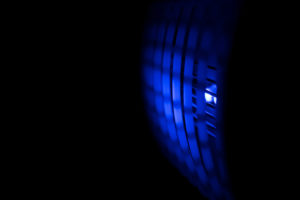 You probably know that flies are drawn to ultraviolet (UV) light. Science hasn’t given us an exact explanation as to why flies love UV light so much, although there are plenty of theories. It could be because UV rays naturally occur in sunlight, which the insects associate with food and safety. Another theory is that flies and other insects use the UV light from sunlight as a means of navigation, and they get confused by other light sources. Whatever the reason, flies are predictable in their attraction to UV light, and electric fly killers use this to their advantage!
You probably know that flies are drawn to ultraviolet (UV) light. Science hasn’t given us an exact explanation as to why flies love UV light so much, although there are plenty of theories. It could be because UV rays naturally occur in sunlight, which the insects associate with food and safety. Another theory is that flies and other insects use the UV light from sunlight as a means of navigation, and they get confused by other light sources. Whatever the reason, flies are predictable in their attraction to UV light, and electric fly killers use this to their advantage!
They give off large amounts of UV light which, while invisible to humans, is incredibly attractive to flies. This draws the bugs into the fly killer, where they’re either zapped with electricity or trapped on a sticky glueboard.
Does Power Matter?

Measuring the power of a fly zapper can be confusing as it’s divided into two parts – the total power and the output of the bulbs. The total power includes the bulbs and all the other bits which don’t attract flies, such as the electric killing grid. The power of the bulbs is a more reliable indicator of how effective a fly killer is. Generally, a single good quality 15W UV bulb will cover around 40m², although be aware this can change depending on the design of the fly killer, how bright the room is, and where you place the unit.
Where Should I Install an Electric Fly Killer?
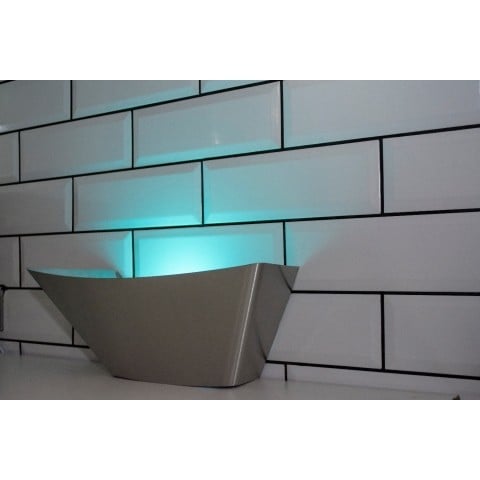 Many people don’t realise that when it comes to electric fly killers, location is everything. You need to make sure they’re actually visible, for one thing! As they work using UV light, you need to ensure that the light isn’t blocked by furniture or clutter around your home. As a result, the best place to put them is usually on tabletops or hung from the ceiling. This gives them a bit of elevation so their UV rays can spread out across your whole room.
Many people don’t realise that when it comes to electric fly killers, location is everything. You need to make sure they’re actually visible, for one thing! As they work using UV light, you need to ensure that the light isn’t blocked by furniture or clutter around your home. As a result, the best place to put them is usually on tabletops or hung from the ceiling. This gives them a bit of elevation so their UV rays can spread out across your whole room.
Types of Fly Killer
While they all use UV light to attract flies, not all electric fly killers get rid of pests in the same way. There are two main varieties; zappers and glueboard fly killers.
Fly Zappers
The most common kind of electric fly killer, zappers are simple and effective. They use a UV light source to lure flies onto an electrified grid, giving them a quick electric shock and killing them instantly. The benefits of a zapper are that they’re affordable and low-maintenance, so you can easily pick one or two up for the house, turn them on, and forget about them.
Glueboards
 When a fly is zapped by an electric killing grid, tiny parts of them can sometimes be flung out into a room. These are usually only microscopic particles so this isn’t an issue for most homes, provided you regularly clean your hard surfaces and flooring. However, if you’re using your fly killer in a kitchen or in a restaurant, they might still pose a hygiene risk. If that’s the case, then a glueboard fly killer is the perfect solution.
When a fly is zapped by an electric killing grid, tiny parts of them can sometimes be flung out into a room. These are usually only microscopic particles so this isn’t an issue for most homes, provided you regularly clean your hard surfaces and flooring. However, if you’re using your fly killer in a kitchen or in a restaurant, they might still pose a hygiene risk. If that’s the case, then a glueboard fly killer is the perfect solution.
They use UV bulbs to draw in flies, but instead of using an electrified grid to kill them, glueboard fly killers instead use a sticky board to trap them. This has a few benefits; one is that it keeps all the fly remains hygienically out of sight, meaning you never have to worry about them contaminating food. The second is that they’re completely silent, so you won’t be disturbed by any zapping sounds! This makes them a great choice for any customer-facing business or hygienic homeowner.
Replacement Bulbs for Electric Fly Killers
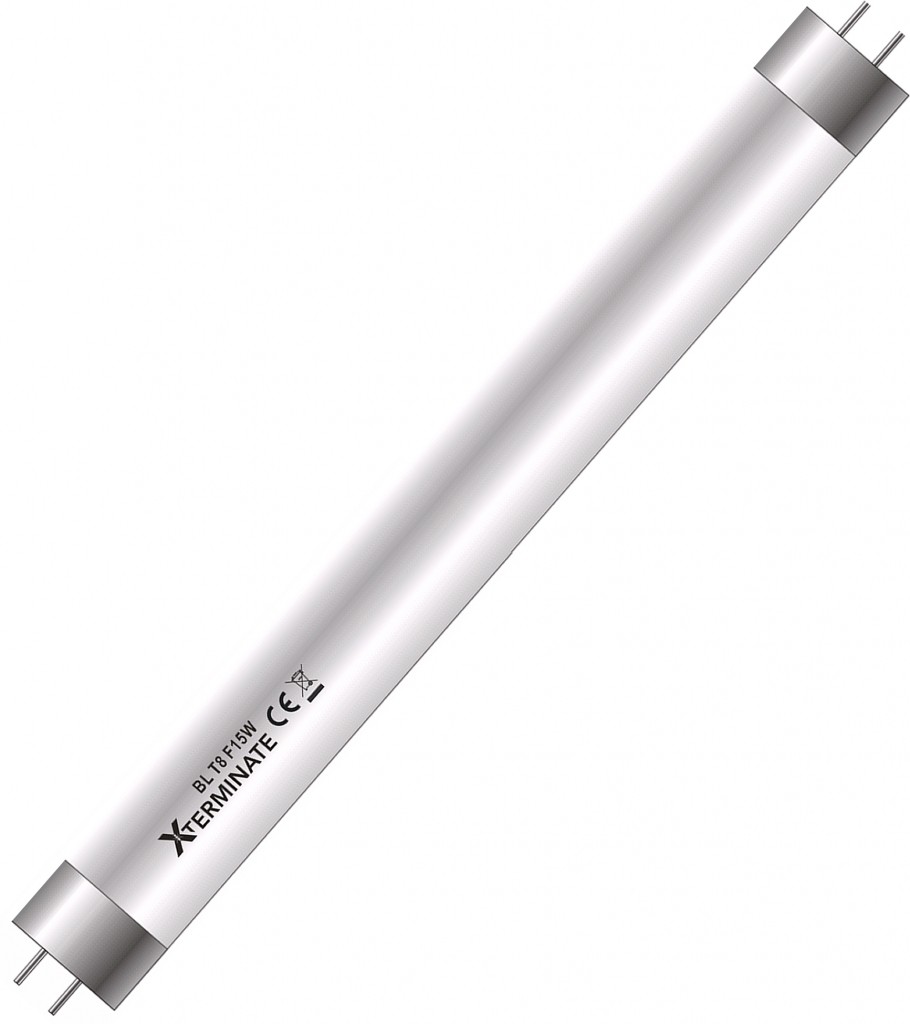 Most electric fly killers use UV bulbs to emit UV light. They contain a noble gas (like most light bulbs) and a phosphor – usually mercury – which is a substance that can create UV light in the right conditions. When an electric current is passed through the bulb, two things happen; the gas gets charged and starts to glow, which in turn excites the phosphor, causing it to emit UV light.
Most electric fly killers use UV bulbs to emit UV light. They contain a noble gas (like most light bulbs) and a phosphor – usually mercury – which is a substance that can create UV light in the right conditions. When an electric current is passed through the bulb, two things happen; the gas gets charged and starts to glow, which in turn excites the phosphor, causing it to emit UV light.
You might be wondering why you need to know all that complicated physics stuff, but it’s actually really important! Over time, the phosphor inside the bulb will degrade, and after about 12 months there’ll be nothing left of it. However, the gas inside the bulb will still glow that purply-blue colour, which can fool people into thinking it’s still giving off UV rays! This means you should replace your UV bulbs once a year, even if they seem to be working fine. If you don’t, your fly killer won’t be very effective – it’ll still kill any pests that happen to bumble into it, but it won’t actually attract them. Remember, UV light is invisible – just because your fly killer is giving off purple light doesn’t mean it’s working properly!
LED Fly Killers
If you don’t want to replace your fly killer’s bulbs every year, you’ll be pleased to know there is another way. LED fly killers are the next generation of pest control products – they use UV LEDs instead of normal bulbs. This means they come with a few big benefits.
No Need to Replace Bulbs
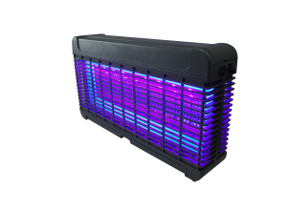
Low-Energy
Electric fly killers are meant to be left on 24/7. It makes sense, then, to choose one that’s as energy-efficient as you can afford to help keep electricity bills low. LED lights use roughly half the energy of traditional UV bulbs while still offering the same coverage, which is good for you and good for the planet!
Eco-Friendly
LED lights don’t contain any potentially harmful chemicals like mercury. This means that making them is much better for the planet!
Did You Know? Top Fly Facts
Flies Have Fast Reactions
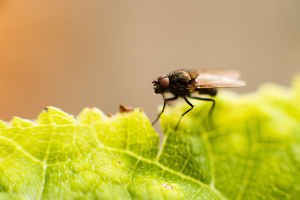 Flies can process what they see much faster than we can. Our brains process 60 images a second, whereas flies can process 250. This basically means we look like we’re moving in slow motion compared to a fly! If you’ve ever wondered why it’s so hard to swat a fly, this is why.
Flies can process what they see much faster than we can. Our brains process 60 images a second, whereas flies can process 250. This basically means we look like we’re moving in slow motion compared to a fly! If you’ve ever wondered why it’s so hard to swat a fly, this is why.
Flies Taste with Their Feet
Flies like to wander around on whatever they land on, which is one of the reasons they spread germs so quickly. This is because their taste buds are on their feet!
They Live Longer Than You Think
A common myth is that flies only live for 24 hours. In fact, they can live for 30-50 days! This still isn’t a very long time, but they can lay up to 500 eggs throughout their life. Both of these facts are a good argument for getting rid of flies as quickly as possible!
Different Flies Prefer Different Foods
Flies aren’t picky eaters and they’ll feed on almost anything If they have to. However, they still have their preferences which vary depending on the species of fly. Some like fruit or old milk and dairy, whereas others prefer rotting meat and faeces.
They’ve Made it to Outer Space
There’s a swarm of flies on the International Space Station! Luckily, they’re kept in a controlled environment by NASA scientists. The astronauts are studying them to learn how they react in low gravity.



